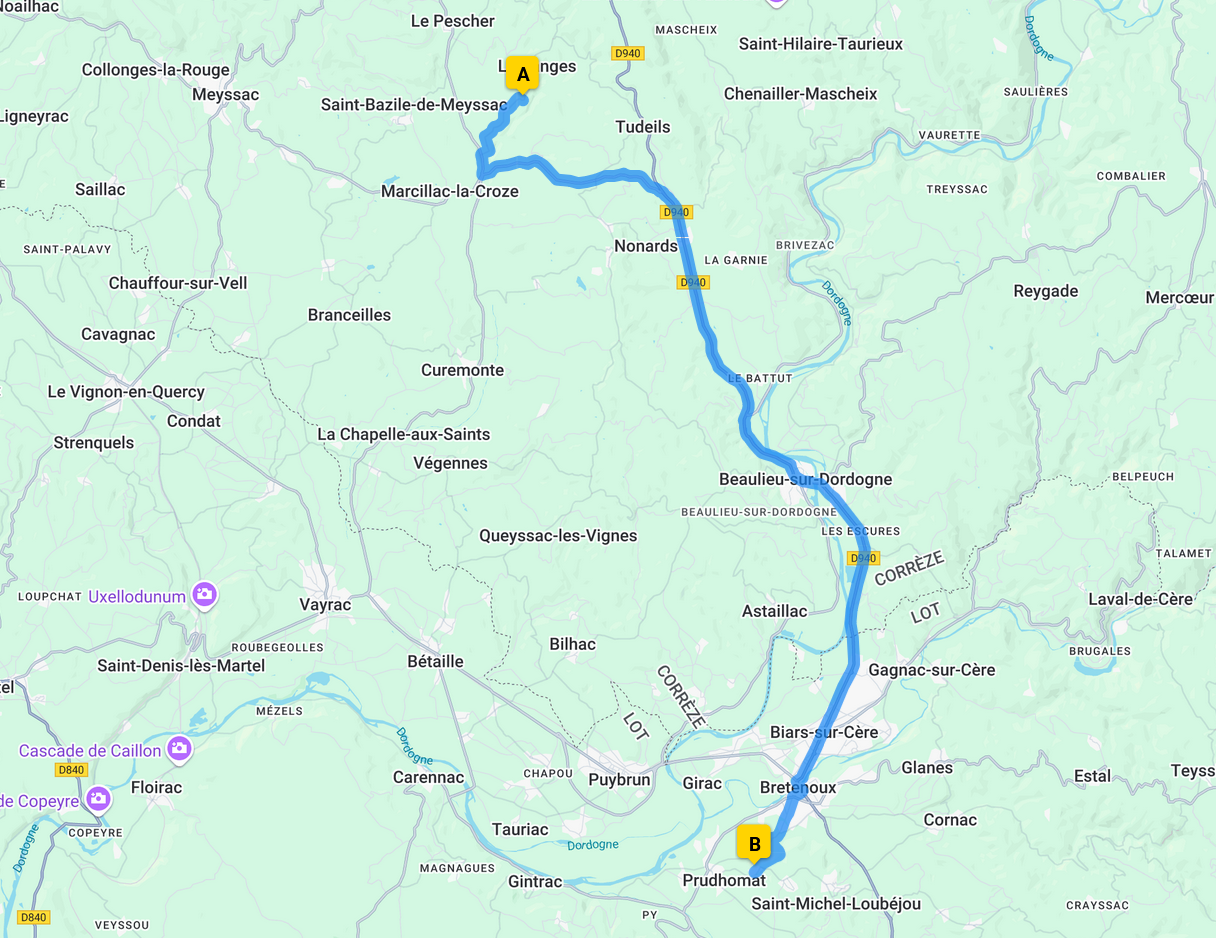About Château de Castelnau-Bretenoux
The Château de Castelnau-Bretenoux is a magnificent medieval fortress located in the Lot department of southwestern France, near the village of Prudhomat. It's one of the most impressive castles in the Quercy Occitania and is easily recognizable by its striking red stone walls, which contrast beautifully with the surrounding green landscape.
The castle's origins trace back to the 11th century, around 1100, when Hugues, Baron of Castelnau, began building a fortified enclosure around his manor. This marked the beginning of the powerful Castelnau dynasty. Over the centuries, the castle was significantly enlarged and fortified, adapting to evolving military techniques, particularly during the 14th and 15th centuries. It played a crucial defensive role during the Hundred Years' War and the French Wars of Religion.
In the 17th century, the castle underwent transformations to become a more luxurious residence, with the addition of large windows, richly decorated salons, and an honorable balcony. However, after the death of the last Castelnau in 1715, the castle fell into disrepair. It suffered further damage from a fire in 1851.
Its savior came in 1896 in the form of Jean Mouliérat (1853-1932), a renowned tenor with the Paris Opéra Comique and a passionate collector of art and furniture. Mouliérat dedicated 30 years to restoring the castle and furnishing its interiors with his extensive collection. Shortly before his death in 1932, he generously donated the Château de Castelnau-Bretenoux and its collections to the French state, with the stipulation that the furnishings remain as he had arranged them. It has been listed as a monument historique by the French Ministry of Culture since 1862.
The castle is a prime example of medieval military architecture, with thick walls, nine round towers, wide curtain walls, and a formidable keep. Its layout is roughly triangular. The most imposing is the 14-meter diameter "Artillery Tower" in the northeast corner. The main entrance, located on the south side, was heavily fortified with a drawbridge, portcullis, and machicolations (though some defensive elements were removed during the French Revolution).Perched on a hill overlooking the confluence of four rivers (the Cère, Bave, Mamoul, and Dordogne), the castle offered a commanding strategic position and provides spectacular panoramic views of the surrounding valleys.
References
Text generated by Microsoft CoPilot<
- 1. www.castelnau-bretenoux.fr
- 2. Wkikpedia
- 3. www.gites-de-france.com
- 4. www.castelnau-bretenoux.fr
- 5. campinglachampagne.eu


























